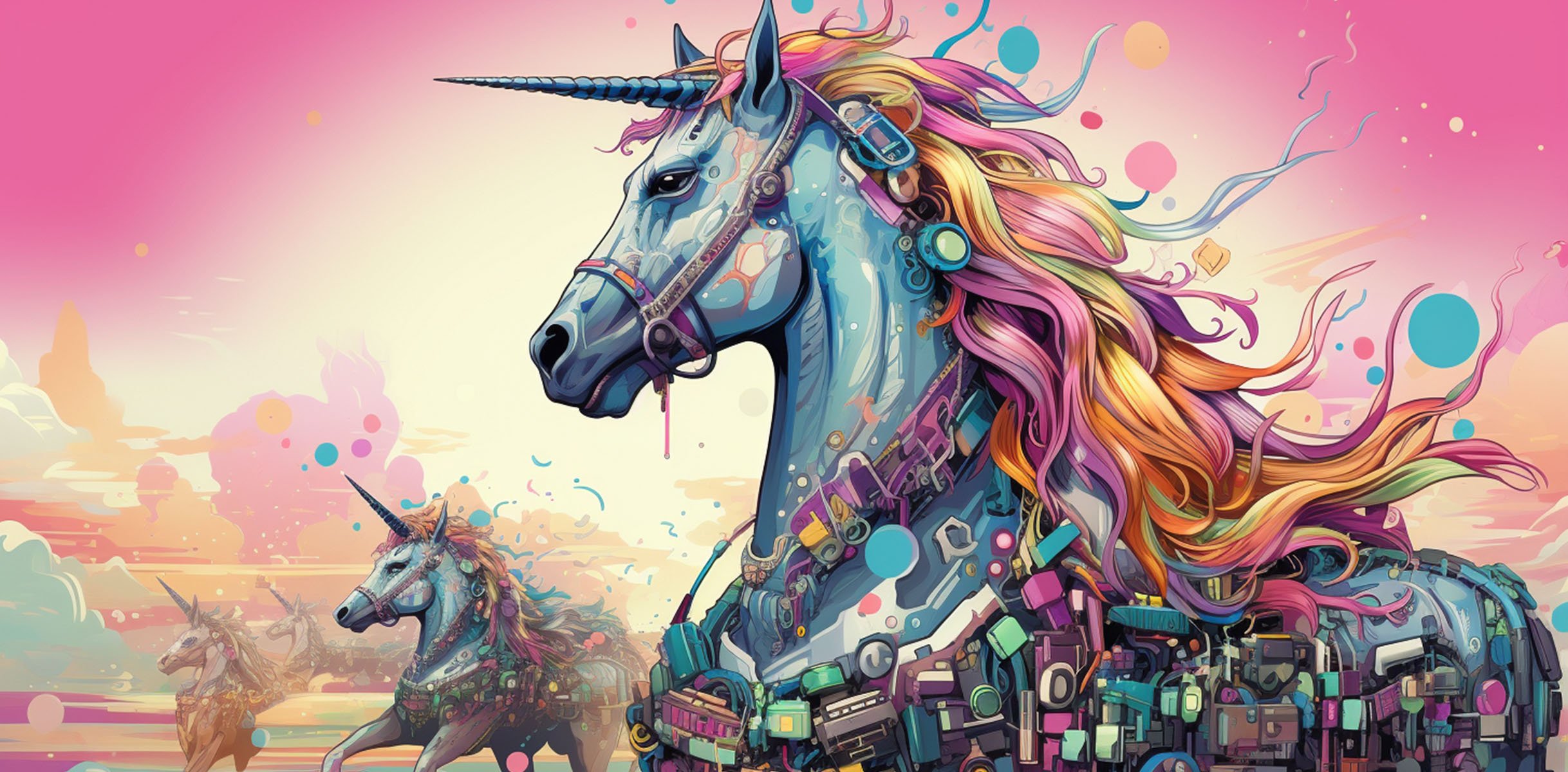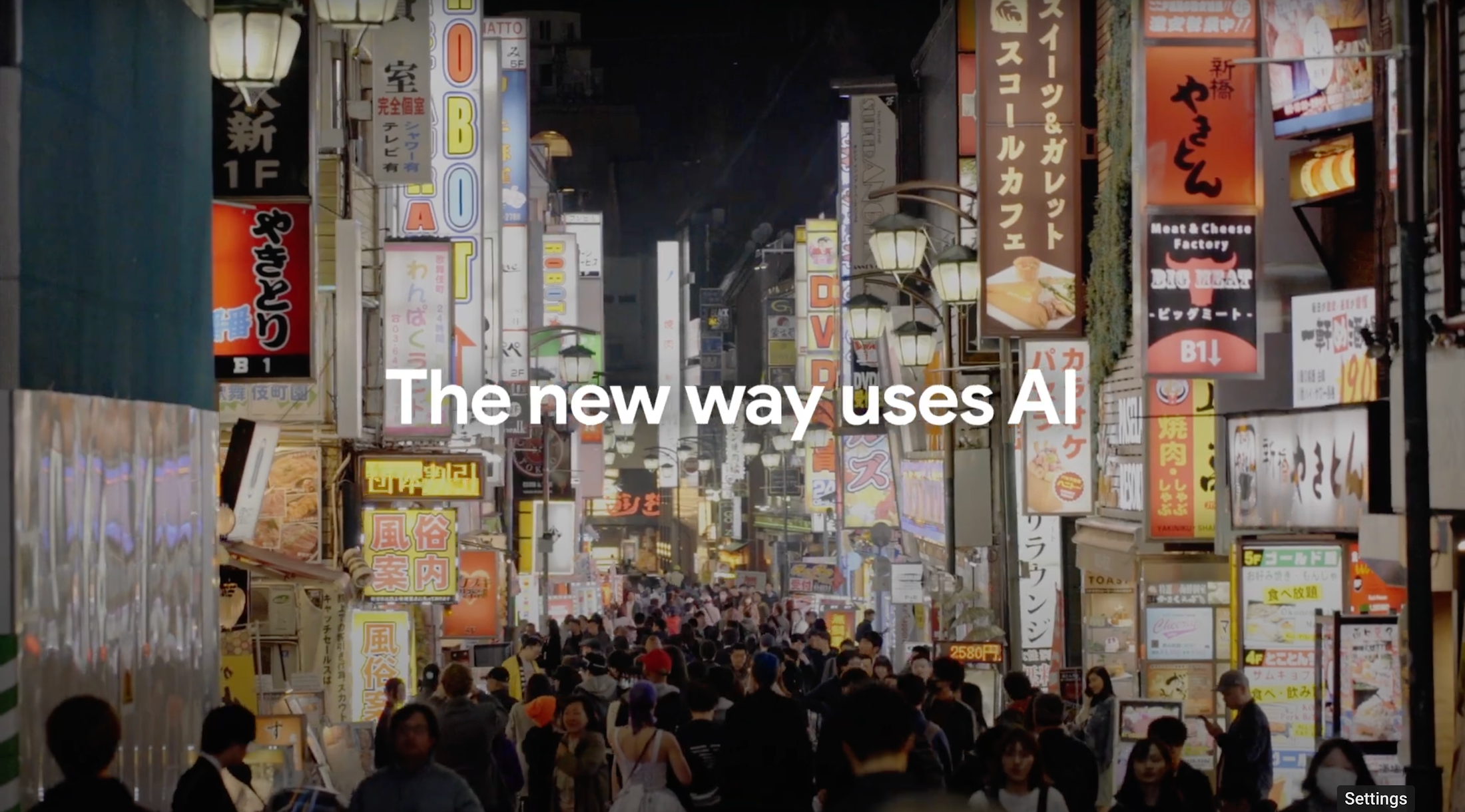What 5 AI unicorns think is the NEXT big thing

Michael Endler
AI Editor, Google Cloud
Sabrina Cherny
Contributing Producer, Google Cloud
Some of the leading AI startups at NEXT share perspectives on the creativity, responsibility, and efficiency driving the future of AI.
While the fortunes of the tech sector have fluctuated dramatically in recent years, one group has continued to race along pretty much as you’d expect: startups developing generative AI.
As excitement over this new technology continues to grow, the emerging market has managed to produce 13 unicorns, firms with valuations over $1 billion. At least five joined those ranks just this year, and the list continues to grow — for good reason. The enthusiasm of both the public and investors is partly due to the vast and largely uncharted possibilities of generative AI (look no further than the action at this year's Google Cloud Next conference for proof).
Almost none of these AI impresarios is doing the same things with generative AI, or doing it in the same way. Some offer content editing, visual creation, and research, while others are focusing on chatbots and more industry-specific applications.
With seemingly as many enterprise AI opportunities as there are existing business lines, the most common thread among these companies has been embracing cloud infrastructure and AI platforms to build their innovations — around 70% of AI unicorns are currently operating on Google Cloud.
To get a better sense of where some of these unicorns see generative AI heading, we asked five of them one simple question here at Next: What do you see as the next big thing in generative AI? Here’s what they had to say.

Character.AI: Innovation is in the eye of the beholder
Generative AI capabilities are more accessible and understandable than previous types of AI technologies. If you can use a search engine, you can use a generative AI chatbot — and it’s opening up a vast number of doors to new ways to interact with technology.
With over 20 million users registered since it first launched in 2022, Character.AI has shown that when it comes to talking to technology — people want to do it on their own terms. The AI startup allows users to instantly interact with and create personalized and hyper-versatile superintelligence with various personas. Instead of talking to a single stock chatbot, you can ask a variety of characters for advice, brainstorming ideas, language practice, or even just strike up a virtual friendship. There are currently over 18 million characters on Character.AI.
Generative AI is so general and so usable that billions of users are going to invent billions of use cases instantly. The possibilities are endless, and we are going to be extremely surprised at all of the things people come up with. At Character.AI, we believe the best applications are the ones we haven't thought of yet. Our job is to improve the capabilities and then let users do what they want.
Noam Shazeer, CEO, Character.AI.
AI21 Labs: Bridging the gap between machines and enterprise users
There’s no question that the lion’s share of generative AI potential resides in the ability to transform the way we work, whether it’s helping to create new business content, improving customer service experiences, or removing repetitive tasks from employee workloads. Still, many organizations question whether generative AI models are really reliable, accurate, and secure enough for the enterprise.
At AI21 Labs, the mission is to eliminate concerns over using generative AI and other natural language processing (NLP) technologies. With a family of state-of-the-art large language models, AI21 Labs is all about protecting businesses from the most prevalent risks of generative AI, such as inaccurate responses and hallucinations. These models are made to go beyond generic answers, learning and improving based on an organization’s specific data to help them solve real production use cases.
As the field of generative AI becomes more mature, we expect more and more organizations to move from the experimentation to true adoption and leverage generative AI capabilities to benefit their bottom line.
Leeor Moses-Voronov, VP of Business Development and Alliances, AI21 Labs
Anthropic: New opportunities in safer generative AI
Just like AI21, Anthropic attempts to address one of the biggest causes for hesitation when it comes to generative AI: whether you can adopt it safely and confidently. For all its potential benefits, generative AI raises certain concerns about the consequences for both organizations and society if it’s not designed or deployed responsibly.
For Anthropic, an AI safety and research company, these considerations sit at the heart of its mission to create honest, harmless, and helpful AI systems so people can confidently use safer applications of generative AI without having to trade off on product excellence. Known for its AI assistant Claude — one of the most advanced AI systems available on the market — Anthropic has forged a partnership with Google Cloud to help realize the shared goal of delivering reliable, interpretable, and steerable AI to customers, developers, and enterprises alike.
Our goal is to inspire a race to the top on safety. Enterprises care deeply about many aspects of safety, whether it's data privacy, reliability, accuracy, and more, because it's better for their customers. There's a lot of research needed to make progress on these topics, but if we're able to better understand these systems as well as improve on performance, it will unlock huge opportunities across sectors.
Sandy Banerjee, Go-to-Market Lead, Anthropic
Runway: AI for creatives, by creatives
Runway has been pushing the boundaries of creativity with artificial intelligence for the better part of a decade — building multi-modal AI systems for the next generation of storytellers.
Runway has been working with some of the biggest companies and creators in the world, such as the teams behind Everything, Everywhere, All At Once, one of the most award-winning films in cinematic history. Runway is rebuilding the creative stack from the ground up as all creators and storytellers embrace generative AI in their workflows.
We are transitioning from rendered pixels to generated pixels, and this shift to generative media is unlocking an unprecedented level of creative potential.AI is the new tool that will reshape storytelling. The invention of the camera 200 years ago forever changed our world. AI is a new kind of camera that will transform how we express ourselves and how we tell stories.
Cristóbal Valenzuela, CEO and Co-Founder, Runway
Typeface: Bringing data and AI to everyone
Before generative AI, enterprise workforces spent days, weeks, and sometimes months to produce high-quality content for blogs, social media posts, paid advertising campaigns, and more. With generative AI, it’s possible to train and personalize models to understand your brand, customers, and overall business goals and generate content that resonates with your audience in hours.
Supercharging generative AI for your specific organization is what the application Typeface was made to do — securely and at scale. The startup aims to train unique generative AI models to each brand in order to deliver personalized brand content, all tailored to the company’s brand guidelines, visual assets, audience segments, and analytics data. And customers can have the confidence their data and content remains private with Typeface.
Over the last few decades, we have spent all our time adapting to computers and how to interact with them. What’s exciting about this new wave of generative AI is that for the first time machines are going to start adapting to us and begin to interact with us in natural ways. As generative AI matures, the entire fabric of the enterprise is going to evolve from being just a set of applications in data islands to a very fluid knowledge fabric that anyone and everyone can tap into.
Abhay Parasnis, CEO of Typeface
Opening image created with Midjourney, running on Google Cloud, using the prompt: A fun image of five AI unicorns.



